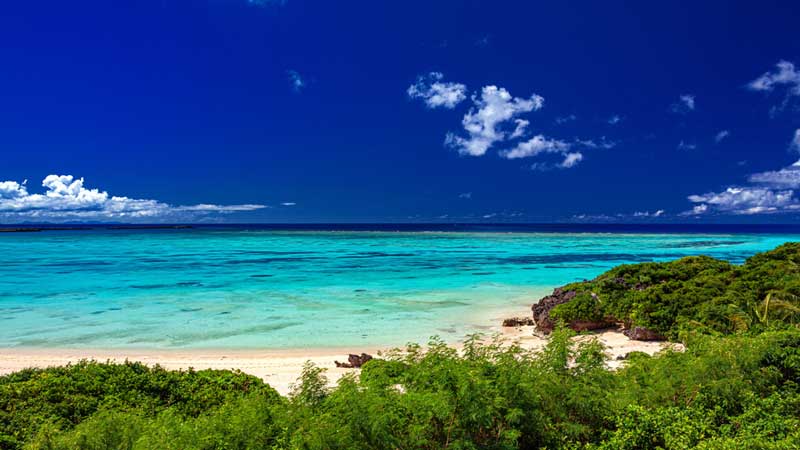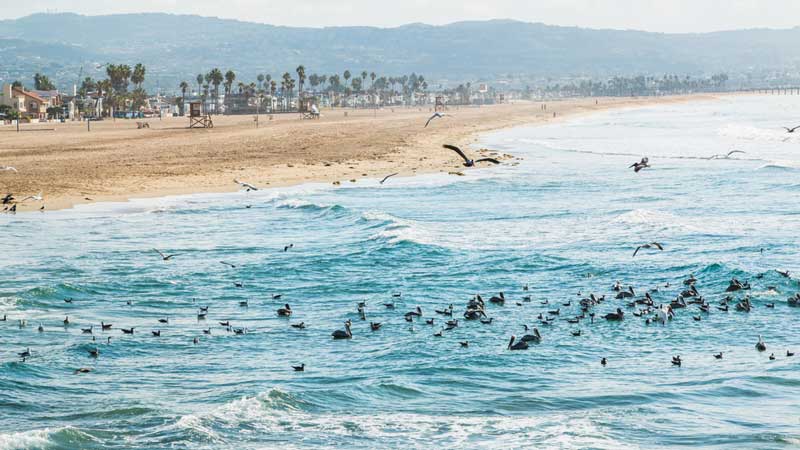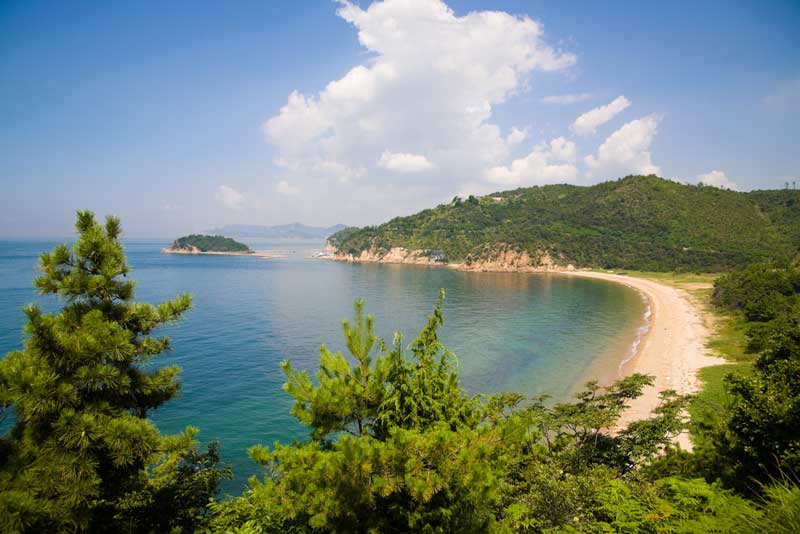Japan is an island nation in East Asia, located in the northwest Pacific Ocean. It is bordered by the Sea of Japan to the west, extending from the Sea of Okhotsk in the north to the East China Sea and Taiwan in the south.
This archipelago consists of over 14,000 islands, with the four main ones being Honshu, Hokkaido, Kyushu, and Shikoku. Tokyo, the capital and largest city, is a global hub of culture, technology, and rich history.
Culturally, Japan is renowned for its blend of traditional and modern aspects, ranging from ancient practices like tea ceremonies and sumo wrestling to cutting-edge technology and pop culture phenomena like anime and manga.
Visiting Japan’s islands offers a rich tapestry of experiences, each island with its unique allure. Each island, whether it’s steeped in history, rich in natural beauty, or a hub of cultural activities, presents an opportunity to immerse in the quintessential Japanese island experience, away from the hustle of mainland life.
Most Beautiful Islands of Japan
Awaji Island

Awaji Island
Awaji Island, located in Hyōgo Prefecture, Japan, is a fascinating blend of natural beauty, rich mythology, and cultural heritage. As the largest island in the Seto Inland Sea, Awaji boasts a diverse geography, including the world-famous Naruto whirlpools and the second-longest suspension bridge in the world, the Akashi Kaikyo Bridge.
The island is steeped in Japanese myth; according to Shinto creation stories, Awaji was the first island to be formed. Visitors can explore the deep connection to these myths at various historical sites.
The island is also renowned for its Awaji Ningyō-Jōruri, a traditional puppet theater, which is a designated Intangible Cultural Heritage of Japan.
The Island’s cuisine is influenced by its long-standing connection with the Japanese Imperial Family. This highlights Awaji’s status as a “region of food,” offering a variety of fresh and delectable ingredients.
The abundance of hot springs on the island makes it an ideal destination for relaxation and rejuvenation. With its proximity to major cities like Kobe and Osaka, Awaji Island is a convenient and enriching escape for those looking to explore Japan’s natural and mythological heritage.
Okinoshima

Okinoshima
Okinoshima Island, off the coast of Munakata, Fukuoka in Japan, is enveloped in sacred mystery and ancient rituals.
This UNESCO World Heritage Site, part of the Sacred Island of Okinoshima and Associated Sites in the Munakata Region, is a testament to the island’s long-standing spiritual significance in Japan.
The island’s entire landmass is considered a divine entity in Shinto belief, and it has been a site of ritual practices since the 4th century, reflecting early worship practices linked to maritime safety.
The island’s strict sacredness is evident in its unique traditions and taboos, such as the prohibition of women on the island and the requirement for visitors to undergo ritual purification.
These restrictions have preserved the island’s mystique and its rich archaeological treasures, including over 80,000 artifacts that are now national treasures.
The rituals performed here over centuries have left an indelible mark, making Okinoshima a significant cultural and historical site in Japan.
Yoron Island

Yoron Island
Yoron Island, situated north of Okinawa and part of Kagoshima Prefecture, offers a secluded and pristine experience.
This small island, only 23 kilometers in circumference, is a hidden gem where visitors can explore its entire expanse, ideally by bicycle, in just a day.
Yoron is celebrated for its untouched beaches, including Yurigahama, a unique sand island that emerges from the sea once a day.
The island’s isolation contributes to its charm, making it feel like a private retreat. The weather is consistently mild, and the beaches, often empty, provide a serene escape.
Yoron’s unique geographical location and limited accessibility make it an exceptional destination for those seeking tranquility and unspoiled natural beauty.
Enoshima

Enoshima
Enoshima, a small island near Kamakura, offers a blend of spiritual heritage and natural beauty. Easily accessible from Tokyo, it serves as an excellent day-trip destination for visitors.
The island is known for its Enoshima Shrine, dedicated to the goddess of good fortune, wealth, music, and knowledge, Benten. Local legend narrates how Benten tamed a five-headed dragon that terrorized the area, leading to the island’s creation.
Enoshima also boasts the Samuel Cocking Garden, an English-style garden with a viewing platform known as the Sea Candle, offering panoramic views of Tokyo, Yokohama, and Mount Fuji.
Okunoshima

Okunoshima
Located in the Inland Sea of Japan, Okunoshima, often referred to as Rabbit Island, is unique for its population of friendly wild rabbits.
The origins of these rabbits are a subject of debate, with theories ranging from their use in World War II chemical weapons testing to being released by schoolchildren in the 1970s. Today, they are a symbol of safe childbirth and fertility, drawing visitors for good fortune.
Okunoshima’s lack of natural predators has allowed the rabbit population to thrive, making the island a unique and charming destination.
While the island’s history is complex, its current status as a haven for these furry inhabitants offers a unique and endearing experience for visitors.
Kinkasan

Kinkasan
Kinkasan, a small yet spiritually significant island in Miyagi Prefecture, Japan, is renowned as one of the holiest places in the Tohoku region. Dominated by the pyramid-shaped Mount Kinka, the island is a hub of natural beauty and religious significance.
Home to the revered Koganeyama Shrine, which dates back to the 8th century, Kinkasan is believed to bring wealth and good fortune to its visitors.
The shrine, enshrining the god of good fortune, attracts pilgrims with the promise that visiting it annually for three consecutive years could lead to lifelong prosperity.
Besides its religious allure, Kinkasan offers scenic hiking trails with breathtaking views of the Pacific Ocean. The island, also a habitat for friendly deer and elusive monkeys, provides a unique blend of spiritual and natural experiences.
Despite its modest size and population, Kinkasan’s combination of sacred shrines, rich history, and stunning natural landscapes make it a captivating destination for both spiritual seekers and nature enthusiasts.
Rebun Island

Rebun Island
Rebun Island, located off the north coast of Hokkaido, is celebrated for its rich flora, earning it the nickname “Floating Island of Flowers.”
The island’s harsh winters give way to beautiful summer trails across its alpine slopes and grasslands, making it a haven for hikers and nature lovers.
The diverse range of trails provides varying levels of difficulty and length, allowing visitors to fully immerse themselves in Rebun’s natural beauty.
The views of the vast Sea of Okhotsk and the neighboring islets are particularly stunning, showcasing the island’s unique geographical features and endemic plant life.
Nakajima

Nakajima
Nakajima is an unusual island situated in the center of Lake Toya in Hokkaido. Unlike typical islands that are bordered by seas, Nakajima sits in the middle of a lake, offering a unique island experience.
The island is a natural paradise, featuring ancient spruce trees and wild deer, and is home to a museum that provides insights into the island’s biodiversity and folklore.
The promenade and walking trails on Nakajima allow visitors to immerse themselves in its serene natural scenery, making it an ideal destination for those seeking a peaceful retreat in nature.
Ogasawara

Ogasawara
The Ogasawara Islands, a cluster of remote islands under Tokyo’s administration, are located about 1,000 kilometers south of the city. Only two of these islands, Chichijima and Hahajima, are inhabited.
Known for their subtropical climate similar to Okinawa, these islands offer a unique blend of outdoor activities like whale watching, diving, and swimming with dolphins.
The islands’ isolation from the mainland has led to the development of unique flora and fauna, contributing to their allure as a destination for nature and adventure enthusiasts.
The rich biodiversity and the distinct cultural experiences available on the Ogasawara Islands make them a remarkable destination for travelers looking to explore the less frequented parts of Japan.
Iwo Jima

Iwo Jima
Iwo Jima, also known as Iōtō, is a small volcanic island in Japan, renowned for its historical significance rather than its natural beauty.
It covers an area of approximately 21 km² and is characterized by its irregular shape and a high point at Mount Suribachi, which rises to 161 meters.
The island has a tumultuous history, most notably as the site of one of the fiercest battles of World War II – the Battle of Iwo Jima. This battle was marked by intense and brutal fighting between Japanese and American forces.
The island, which once had a civilian population, is now primarily occupied by a Self-Defense Force base and does not have permanent inhabitants. Over time, Iwo Jima’s area has expanded due to volcanic activity, illustrating its ever-changing natural landscape.
Naoshima

Naoshima
Naoshima Island, located in the Seto Inland Sea of Japan, is a unique blend of natural beauty and contemporary art. This island has transformed from a sleepy fishing community into a world-renowned art destination, attracting visitors from around the globe.
It is home to a series of contemporary art museums, installations, and sculptures, including works from famous artists and architects.
The island’s art projects, which seamlessly integrate with the scenic landscapes and the traditional lifestyle of the local community, offer a unique cultural experience.
The fusion of art, architecture, and nature makes Naoshima a distinctive and attractive destination for art enthusiasts and travelers seeking a different kind of Japanese island experience.
Yakushima Island

Yakushima Island
Yakushima Island, a UNESCO World Heritage site located off the southern coast of Kyushu, Japan, is celebrated for its ancient cedar forests, some of which are thousands of years old.
The island’s lush and diverse ecosystem, marked by a range of flora and fauna, provides a haven for nature lovers and hikers.
Its mystical and primeval forests have even inspired famous works, such as the animated film ‘Princess Mononoke’ by Studio Ghibli.
Yakushima is characterized by its unique natural landscapes, ranging from coastal beaches to mountainous terrains, and is known for its heavy rainfall, which nourishes the island’s dense forests.
The Miyako Islands

The Miyako Islands
The Miyako Islands, nestled within Okinawa Prefecture in Japan, are a stunning group of islands renowned for their natural beauty. These islands, positioned between Okinawa Island and the Yaeyama Islands, are celebrated for their lush landscapes and unique cultural heritage.
With a total area of 226.20 km², the Miyako Islands boast pristine beaches and clear blue waters, offering an idyllic retreat for beach lovers and water sports enthusiasts.
The main islands include Miyako Island, Irabu Island, and Tarama Island, each offering its unique charm and attractions. The islands are recognized as an Important Bird Area due to their support for resident Ryukyu green pigeons and migrating whimbrels.
The Miyako Islands, with a population of 55,522 as of January 2018, offer a blend of serene natural beauty and rich cultural experiences, making them a must-visit destination for travelers seeking tranquility and scenic splendor.
Ishigaki-jima

Ishigaki-jima
Ishigaki-jima, a part of the Yaeyama Islands in Okinawa Prefecture, is a captivating island known for its stunning landscapes and rich cultural heritage. The island’s pristine beaches and vibrant coral reefs make it a paradise for beachgoers and snorkelers.
Ishigaki-jima’s sub-tropical climate ensures pleasant weather throughout the year, ideal for outdoor activities. The island is not only a hub for water sports but also offers a range of attractions, including natural beauty spots and cultural sites.
The charming town of Hirara on the island’s north coast is the largest settlement, offering a range of dining and entertainment options.
The island’s diverse terrain, encompassing cliffs, sandy beaches, and coral reefs, provides a picturesque setting for exploration and relaxation.
Connected to neighboring islands by picturesque bridges, Ishigaki-jima serves as a gateway to the splendid beauty and unique culture of the Okinawa region.
Final Thoughts
Exploring Japan’s islands reveals a tapestry of diverse landscapes and rich cultural heritage. These destinations also encapsulate Japan’s ability to blend the traditional with the modern, the natural with the artistic.
They serve as perfect examples of how Japan’s islands are more than just travel destinations; they are experiences that deeply resonate with the soul of every visitor.
